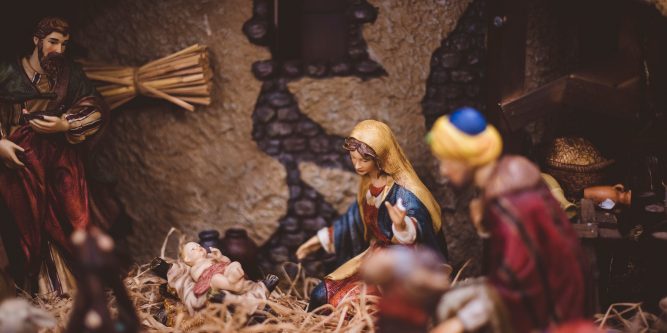“Therefore the Lord Himself will give you a sign: Behold, the virgin shall conceive and bear a Son, and shall call His name Immanuel”
(Isaiah 7:14, NKJV).
As Christmas drew near, my young church decided to stage its very first children’s pageant. We desired to write a script and produce a play that would vibrate with the truth of the Lord coming in human form to be Immanuel—“God with us.”
With limited resources, our team pieced together a simple production. We painted a cardboard donkey and added hay bales to the stage front. We created sheep costumes from white shirts and batting; blue and brown remnants clothed Mary and Joseph. We covered large candy canes with brown paper for shepherd staffs.
As the story came together, I was concerned that it portrayed an all-too docile nativity story. How can the truth of God being born among us be calm and ordinary? The Lord of heaven gave His infant Son into the care of a teenager! The first people who heard the message were bumpkin shepherds. The King of kings was born in a stable beside dirty farm animals! Everything about Jesus’ entrance to the world was humble AND unusual.
When the morning of the play arrived, eager children donned their costumes; excited families gathered for the reenactment. Baby Jesus (a doll) was safely hidden onstage behind a hand-built manger. My co-lead crouched in front of the children with an extra script, intending to prompt anyone who froze up.
As the narrator read Isaiah 7:14, a sense of awe washed upon everyone—for about two seconds. Then Mary and Joseph stepped on stage in their crude outfits struggling to haul a cardboard donkey. In spite of costume mishaps and children walking the wrong direction, our church family was engaged. Everything was going pretty well!
THEN—the sheep and shepherds arrived to see baby Jesus. A “sheep” (a precious three-year-old) saw the cute doll lying in the manger. Suddenly, she scooped “Baby Jesus” into her little arms and trotted offstage, cuddling the doll closely. The audience responded with giggles and suppressed laughter. The narrator chuckled briefly, but continued speaking.
Mary and one of the shepherds quickly realized the gravity of the situation—the doll must get into the manger! They both soundlessly disappeared in the little girl’s direction.
The final scene called for all the characters to sit around baby Jesus in the manger—which at the moment stood glaringly empty. Offstage, the little sheep girl was wandering aimlessly. Mary and the shepherd managed to gently guide our “lost sheep” back to the stage and the center of activity. She carefully placed the doll into the manger as all the characters gathered around.
The narrator concluded: “Jesus came in an unusual way; a simple way. Mary and Joseph agreed to be a part of God’s plan. Jesus was born in a stable. God announced the birth of His Son to simple shepherds. That Infant was Immanuel, ‘God with Us.’ He would be the Savior who would invite all people to come into His fold.”
With laughter, applause, and even a few tears, the audience rose to its feet. Somehow, simple costumes, a kidnapped baby, a wayward sheep, and a good shepherd demonstrated the true Christmas message. Our human plans for our pageant went awry, but God’s timeless truth resounded clearly to everyone present. God is with us!
“For today, in the city of David there has been born for you a Savior, who is Christ the Lord.” —Luke 2:11






